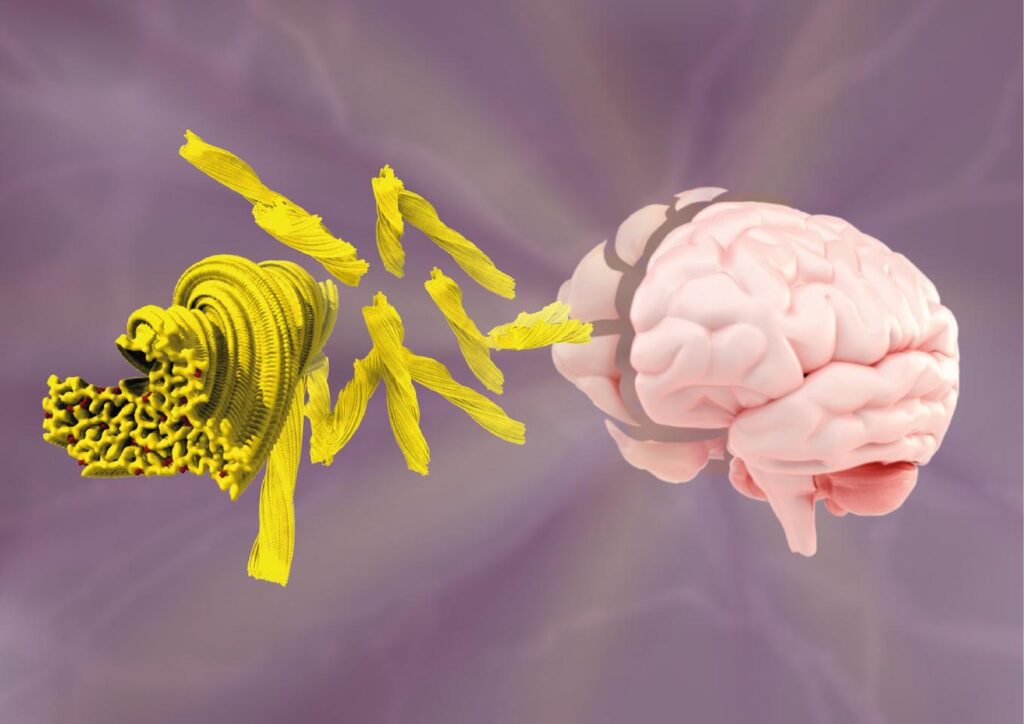Scientists have identified odd clusters of a specific protein in the brains of people with early-onset dementia, pointing to a potential cause, a diagnostic tool and, ultimately, a therapy target for a disease that’s been largely a mystery to researchers. Scientists out of the molecular biology lab of the UK’s Medical Research Council (MRC) have pinpointed unusual aggregations of the TAF15 protein in the progression of frontotemporal dementia. While a large body of research is under way to target protein aggregation and amyloid formation in other neurodegenerative diseases, understanding the mechanisms at play in frontotemporal dementia has – until now – eluded the science community.
“This discovery transforms our understanding of the molecular basis of frontotemporal dementia,” said study lead author Dr Benjamin Ryskeldi-Falcon. “It is a rare finding of a new member of the small group of proteins known to aggregate in neurodegenerative disease. “Now that we have identified the key protein and its structure, we can start to target it for the diagnosis and therapy of this type of frontotemporal dementia, similar to strategies already in the pipeline for targeting the aggregates of amyloid-beta and tau proteins that characterise Alzheimer’s disease,” he added.
Using atomic-resolution cryo-electron microscopy (cryo-EM), the researchers studied the brains of four deceased patients. They expected to learn more about FUS protein aggregation, which had previously been thought of as the disease trigger. Instead, they found a new molecular villain in TAF15.
“This is an unexpected result because, before this study, TAF15 was not known to form amyloid filaments in neurodegenerative diseases and no structures of the protein existed,” said first author Stephan Tetter. “Cryo-EM is transforming our understanding of the molecular pathology of dementia and neurodegenerative diseases more broadly by giving us insights that were beyond the capabilities of previous technologies. ” What’s more, the researchers found that TAF15 was also implicated in motor neurone disease (MND), opening up new paths of study in the hope of developing better diagnostic and treatment options for the progressive neurological disorder.
“Some people who have frontotemporal dementia also have motor neuron disease, a condition in which individuals progressively lose control over their muscles,” said Dr Ryskeldi-Falcon. “In this study, two of the individuals who donated their brains had signs of both diseases. For these individuals, the researchers identified the same aggregated structure of TAF15 in brain regions associated with motor neurone disease.
” Frontotemporal dementia, the progressive degeneration of the frontal and temporal lobes of the brain – the area that regulates personality, behavior and emotion – is known as early-onset dementia as it’s most often diagnosed in people aged 45-65 years. In around 10% of cases, this ‘rogue’ protein appears to be at the root of it. It’s not understood just how TAF15 contributes to both dementia and MND, and what potential connection they may have, but it’s the next step in research from the MRC scientists.
“We are now studying whether aberrant aggregated TAF15 is present in people who have motor neurone disease in the absence of frontotemporal dementia,” said Dr Ryskeldi-Falcon. “The technical challenge of performing cryo-EM meant that we were only able to look at the brains of four individuals,” he added. “However, now that we know the key protein and its structure, we have the potential to develop tools to screen for these abnormal protein aggregates in hundreds of patient samples to test how widespread they are.
” The research was published in the journal . Source:.
From: newatlas
URL: https://newatlas.com/medical/protein-early-onset-dementia/
